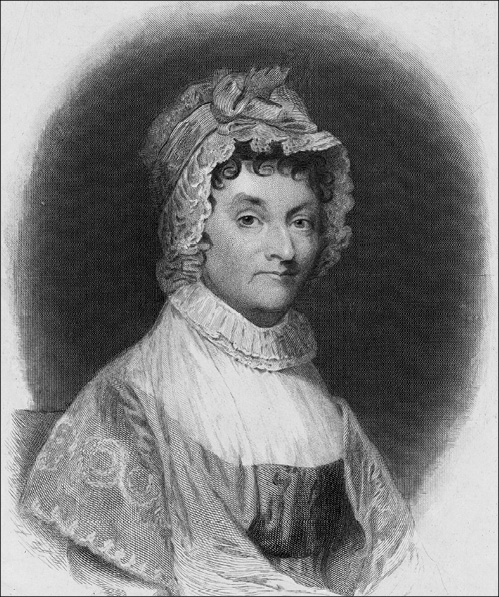6 COKIE ROBERTS on Founding Mothers
“The letters that the women write, where they have absolutely no expectation that we’re going to be reading them two hundred years later, are just completely unvarnished, frank, and real. You get a much more complete view of the society as a whole.”
BOOKS DISCUSSED:
Founding Mothers: The Women Who Raised Our Nation (HarperCollins, 2004)
Ladies of Liberty: The Women Who Shaped Our Nation (HarperCollins, 2008)
Capital Dames: The Civil War and the Women of Washington, 1848–1868 (HarperCollins, 2015)
Much of the traditional writing about the great events of history has focused on the accomplishments of men. Perhaps that is why it is called “his” story and not “her” story.
This is certainly evident in so much of the written history of the United States in the eighteenth and nineteenth centuries. Written history has generally focused on Founding Fathers, generals, presidents, senators, and secretaries of state. By and large, that history has overlooked the women of these eras. They held none of those visible positions; they were not, if married, allowed to own property in their own names; and, of course, they were not allowed to even vote. They were very much behind the scenes.
In fact, the women associated, through family or social relationships, with the well-known men of the eighteenth and nineteenth centuries were quite influential. They were just not as publicly visible, and they exercised influence in areas the men did not understand as well.
All of this is made clear by Cokie Roberts in three books devoted to the influential women of three historical periods: the pre-Revolution era, the early years under the Constitution, and the Civil War. In writing about these women—including Martha Washington, Eliza Hamilton, Abigail Adams, Dolley Madison, Mary Todd Lincoln, Julia Grant, and Clara Barton—Roberts used a treasure trove of letters, some not previously well known, written by and to these women. The result is a look at a side of American history that even diligent students of the subject may know little about.
Cokie Roberts’s role as a book author also may not be as well known to the public as many of the other roles she has held or pursued: daughter of two congressional leaders (House Majority Leader Hale Boggs and his successor Lindy Boggs), NPR and ABC commentator, PBS journalist, and coauthor, with her journalist husband, Steven Roberts, of a weekly news column.
I have known Roberts and her family for many years and have interviewed her many times. On the occasion of this interview, she was really at a homecoming, since both of her parents were so highly respected by the members of Congress.
As the interview shows, Roberts is as adept at being an interviewee as she is at being an interviewer. She clearly conveys that the wives of the Founding Fathers, and of other American political leaders through the Reconstruction period, were not merely social adornments to their prominent husbands, as some readers of traditional accounts of these periods might have thought.
In fact, they had clear impact on their husbands’ work, and thus on the outcome of so much of American history. And they did so despite having virtually no legal or political rights; typically getting married at very young ages; being often pregnant because of the lack of reliable birth control; and having to run businesses and raise children while their husbands were overseas, running the government, or fighting a war.
Roberts provides a number of vivid illustrations of her general view that the women had real impact even though they received little credit for it. For instance, Martha Washington, at great physical risk, visited her husband’s troops every year during the eight-year Revolutionary War, to the great delight of the troops—she helped with replenishment of food and clothing—while also continuing to run Mount Vernon and raise their grandchildren.
Abigail Adams, who was actually a stronger advocate of the break with England than her husband, managed to exchange more than a thousand letters with her husband. The most famous of the letters urged that he “remember the women” when creating laws for the new government. (He did not.) Many of her letters were written while her husband was overseas for years at a time and she was raising their children, running their farm, and fending off potential British attacks.
Dolley Madison became one of Washington’s most influential figures, serving as the widowed President Jefferson’s White House hostess, subsequently as her husband James Madison’s hostess, and, in her later years, as the capital’s most beloved and quite influential figure.
Harriet Lane, the unmarried President James Buchanan’s niece, acted as his hostess and was so involved that she became the first woman to be deemed “First Lady.”
Mary Todd Lincoln was not beloved by anyone, it seemed. But she had enough of an iron will to be able to influence her husband’s views and practices in a number of areas, though not always to Abraham Lincoln’s or the country’s benefit.
Because Julia Grant did not want to be around the volatile Mrs. Lincoln, General Ulysses S. Grant declined to go with the Lincolns to Ford’s Theatre on the night the president was assassinated. Had he done so, Grant might have been in a better position than the young military aide who ultimately accompanied the Lincolns to thwart John Wilkes Booth.

